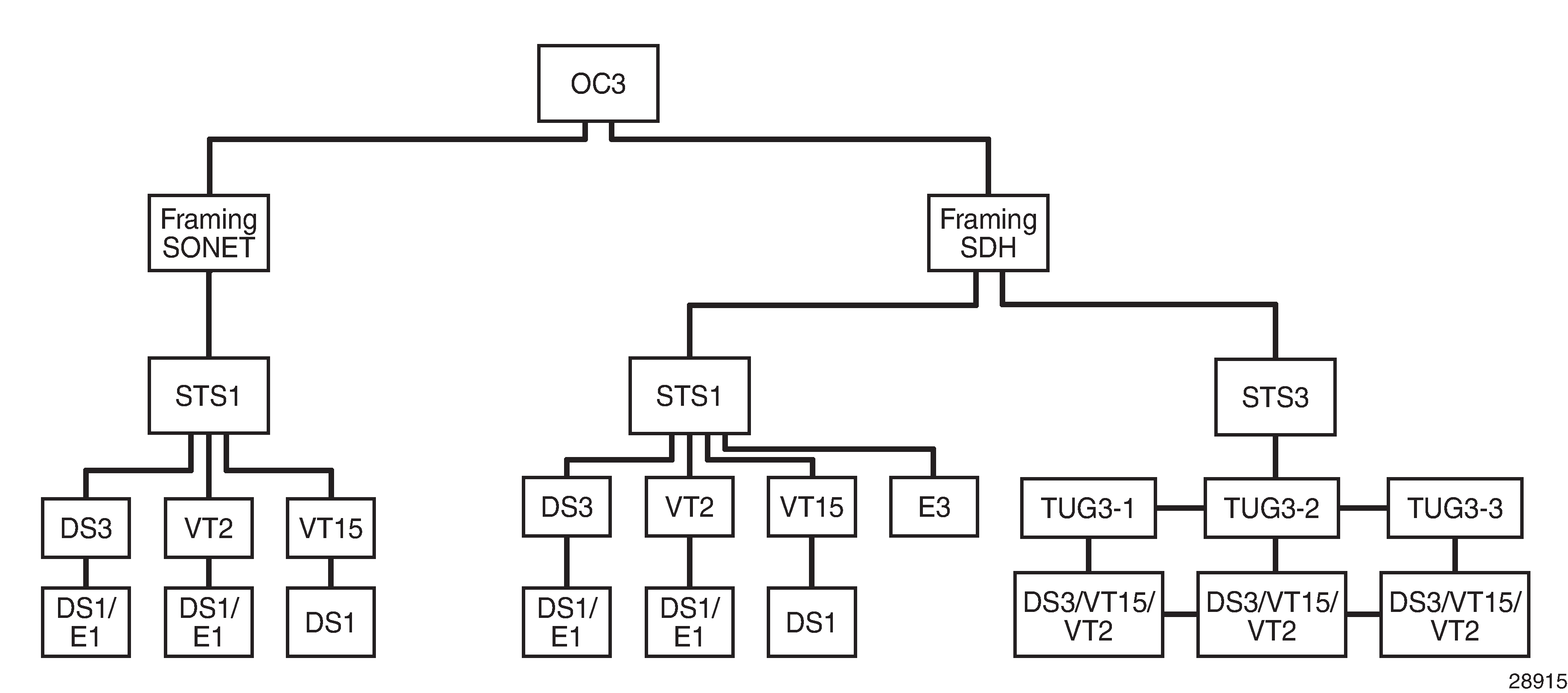In SONET, the base signal is referred to as synchronous transport signal–level 1 (STS-1), which operates at 51.84 Mb/s. Higher-level signals are integer multiples of STS-1, for example, STS-3/OC3 = 3 x STS-1 = 155.52 Mb/s. The SDH equivalent of the SONET STS-1 and STS-3 frames are STM-0 and STM-1, respectively.
In addition to the STS-1 base format, SONET also defines synchronous formats at sub-STS-1 levels. The STS-1 payload can be subdivided into virtual tributaries (VTs) for SONET or virtual containers (VCs) for SDH. VTs and VCs are synchronous signals used to transport lower-speed transmissions. Two VTs are VT1.5 and VT2, where:
VT1.5 = 1.728 Mb/s (enough to carry a T1)
VT2 = 2.304 Mb/s (enough to carry an E1)
The SDH equivalents to VT1.5 and VT2 are VC11 and VC12, respectively.
The 7705 SAR CLI always uses the SONET command syntax and nomenclature, even when configuring an SDH port. For example, the same SONET CLI syntax and nomenclature would be used to configure both a VT1.5 and a VC11. The framing {sonet | sdh} command determines whether VTs or VCs are being configured. Use the show>port-tree command to display SONET/SDH containers.
Figure: OC3 Channelization using SONET and SDH shows various possibilities for OC3 channelization using SONET and SDH framing. The VT1.5 and VT2 labels under the SDH STS1 path illustrate that SONET conventions are used for SDH configuration.
The 7705 SAR does not allow a payload of VT1.5 for VT2 paths. The payload for a VT1.5 path is ds1 and the payload for a VT2 path is vt2.
